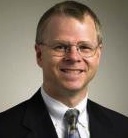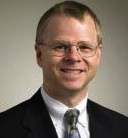 For whom does the stock market exist? You? Me? America?
For whom does the stock market exist? You? Me? America?
A computer server in a co-location cage in Hoboken, New Jersey?
This question always pops into my mind whenever I am confronted with the reality of high frequency trading (HFT). This happened most recently when, in late September, the U.S. Senate Banking committee held a hearing to discuss HFT and its impact on market participants.
Though HFT takes a variety of forms, it is most commonly thought of as the use of computers and ultra-high-speed networking gear to allow capital markets participants to make trades as quickly as possible. In certain cases, these firms aren’t even hoping to make trades, but are merely submitting trades orders to gauge their impact on other market participants, and then withdrawing those orders just as fast as they were issued. The whole order/withdrawal process happens in less than one hundredth and sometimes even a thousandth of a second.
During the Senate hearings, committee Chairman Jack Reed and his colleagues listened to a variety of witnesses, including former professional traders who have “come clean” to discuss in detail how HFT and other tools like specialized order types affect the market.
If you are a regular market participant, I encourage you to read and educate yourself about these issues. There is a wealth of information available not only from traditional media sources like the Wall Street Journal, but also from more professionally-oriented outlets like ZeroHedge.
Unsurprisingly, traders utilizing HFT techniques have been quick to defend their work. Their primary defenses are that a) HFT doesn’t hurt anyone, inasmuch as HFT traders are mostly trading with themselves; and b) HFT provides liquidity to the market as a whole.
As for trading with themselves – well, Credit Suisse recently reported that global equity trading volumes have declined by one half in the past four years alone. Even with HFT and other algorithmic trading constituting as much as 70% of daily trading volume on major U.S. exchanges, HFT traders need to find other HFT traders to do their business. Traditional person-to-person trading is now a sideline.
And now that such organic trading has been marginalized, the idea that HFT provides liquidity sounds an awful lot like the reductive logic used by gangsters seeking protection money who, through crocodile tears moan “gee, who’ll keep the peace if we’re not allowed to take our cut?” But what kind of peace are we talking about here? Is it the kind of peace that allows a “Flash Crash” to happen? That allows Knight Trading to lose about three-quarters of its market value in a few days thanks to a software error? The peace that prevented Facebook from trading on the morning of its IPO and prevented investors from confirming whether, in fact, they actually bought or sold Facebook stock?
Of course, liquidity is more than just trading volumes. It is also manifest in transaction costs and bid-ask spreads. Both of these have declined notably in the past forty years. Transaction costs have been declining ever since 1975 when the Big Bang began the elimination of fixed trade commissions. And spreads narrowed significantly in 2001 when the SEC mandated the quotation of stock prices in decimals, rather than fractions.
So it’s not at all clear whether HFT has brought further reductions in trading costs – or whether that’s even desirable. And perhaps it’s a false economy to think that the narrowest spreads are an unalloyed good, if they provide political cover for HFT that brings with it distrust of the markets in general. Maybe the “cost of doing business” is slightly higher than we think because that’s the price of a transparent market. And whether bid-asked spreads are narrow or not shouldn’t affect most investors, because they don’t trade every millisecond. Plenty of great fortunes and many more nest eggs were built prior to 1975 by people paying 1% or more for a trade.
The ultra-thin spreads we see today are not only a result of the decimalization of pricing, but also a symptom of the larger problem of lax enforcement of the rules, including the legalized front-running that many credible witnesses have observed.
It appears that more and more flesh and blood investors have grown tired of the market shenanigans and have understandably left, moving to gold or other stores of value. And the current “fix-is-in” state of market making isn’t going to encourage them to return. But it stands to reason that the false “liquidity” provided by HFT would be replaced by real liquidity of more market participation, if only regulators and prosecutors had the moral fortitude to enforce laws and regulations already on the books.
For whom should the capital markets exist? America in general to further the growth of industry? Investors willing to risk funding that growth? Speculators willing to take the other side of investors’ trades and play the market action itself? Yes, yes and yes, respectively.
Should it exist for the benefit of high frequency traders who exist in a rule-breaking micro-economy that only moves money among them while driving away capital formation and investor participation? Not so much. America fought (and won) two world wars, landed men on the moon and found a vaccine for polio, all without the help of high frequency trading. I don’t think getting rid of it is going to set America back.
Those of you still in favor of HFT raise your hands. If you’re just a box of circuitry, feel free to flash a red light.


